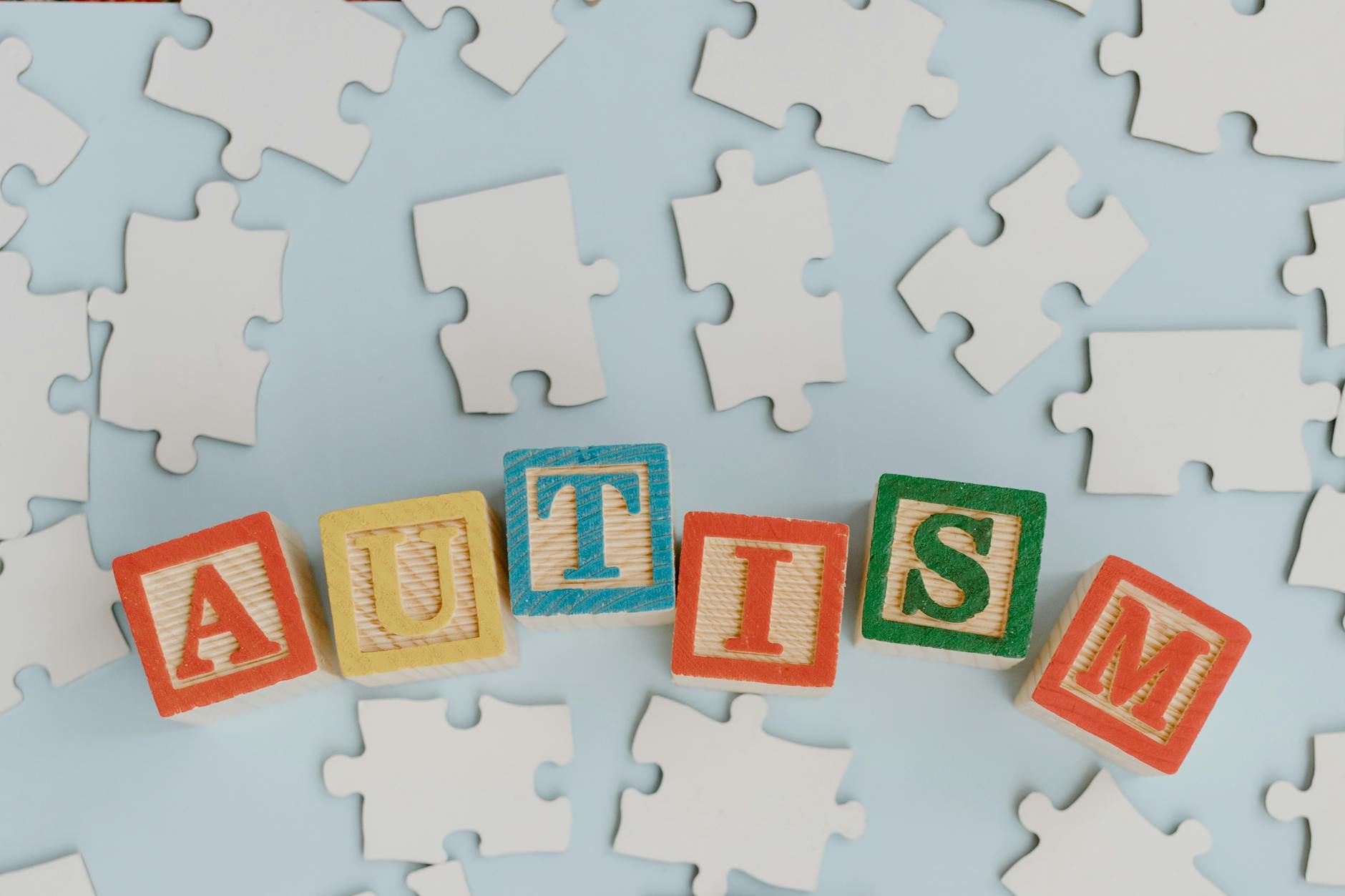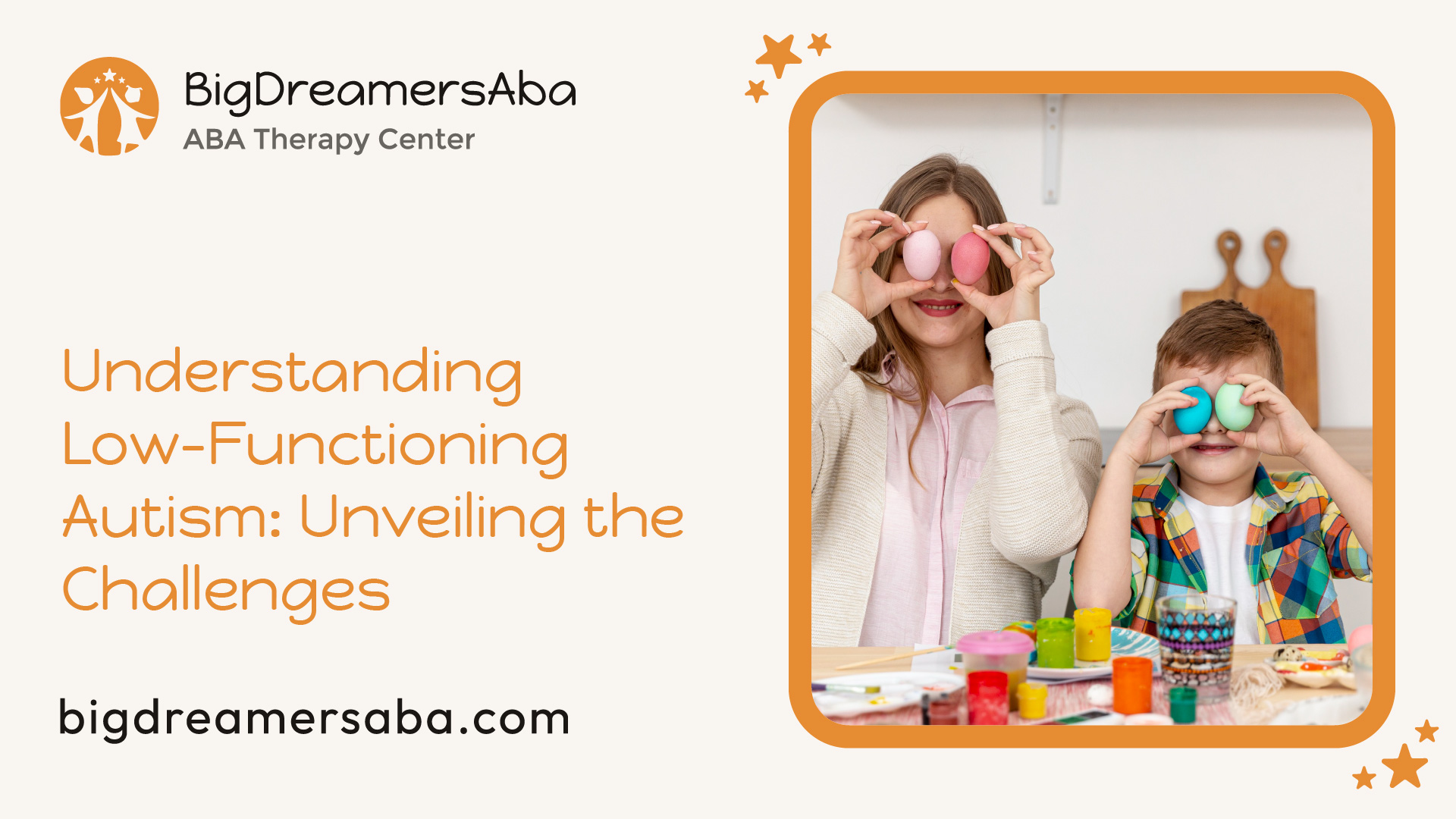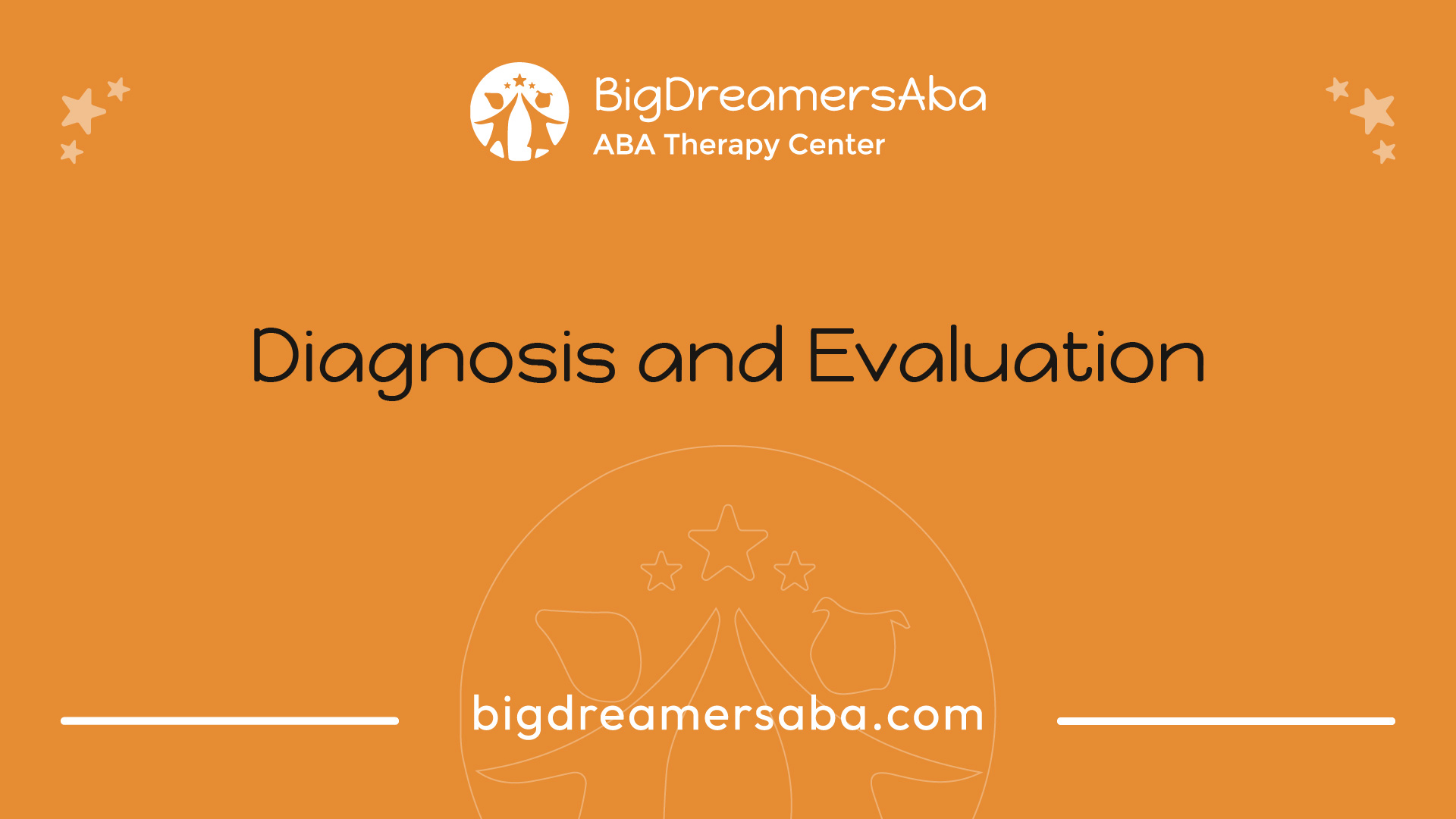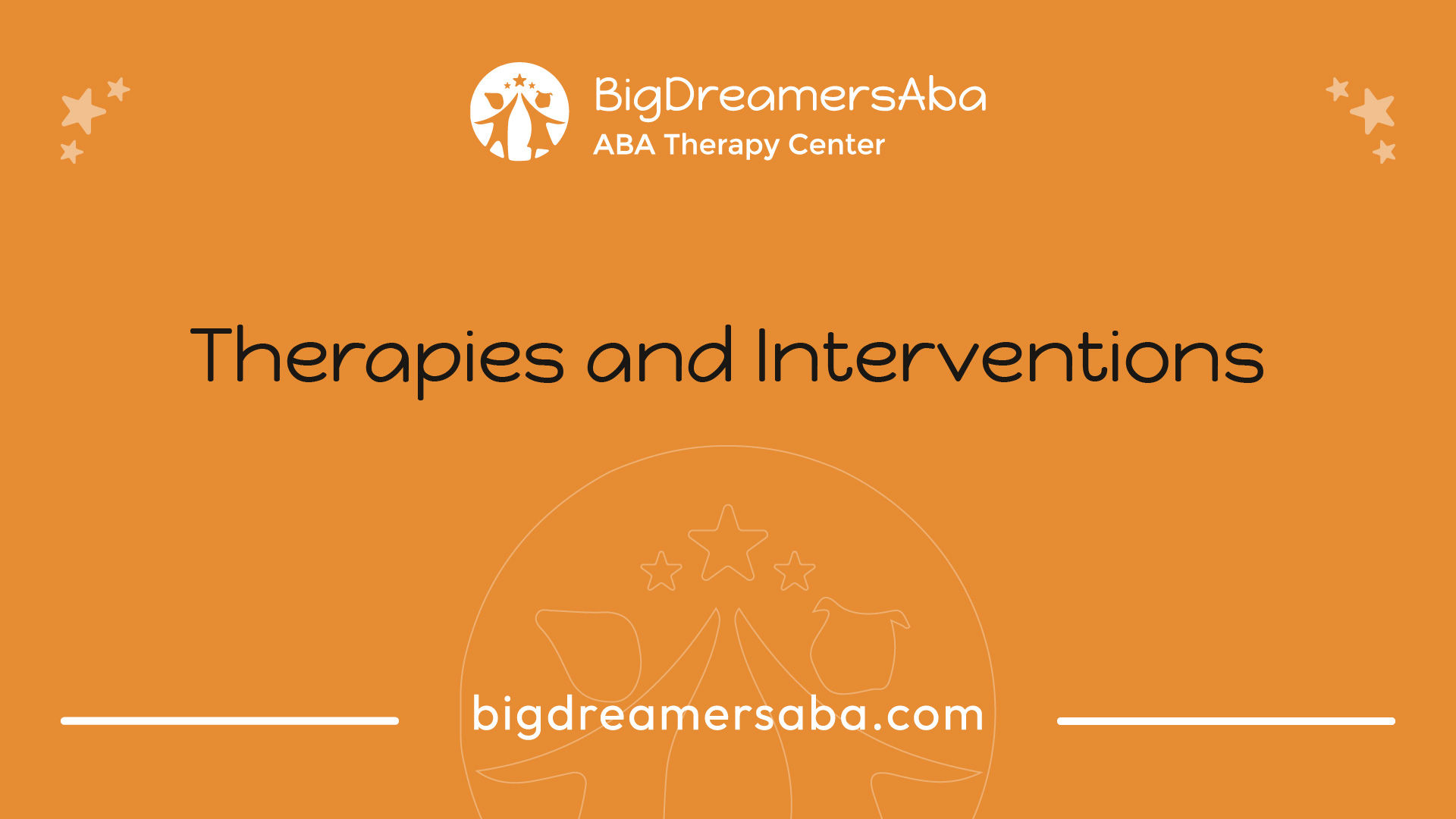Understanding Low-Functioning Autism: Unveiling the Challenges
Unveiling the challenges of low-functioning autism. Explore therapies, support, and the impact on daily life.

Understanding Low-Functioning Autism
Low-functioning autism, also known as severe autism, refers to individuals who experience significant challenges in multiple areas of functioning. These individuals often have profound difficulties with social communication, exhibit repetitive and restrictive behaviors, and may have limited or no verbal language. Understanding the definition and characteristics of low-functioning autism is crucial for providing appropriate support and interventions for individuals with this condition.

Definition and Characteristics
Common symptoms of low-functioning autism include communication challenges, social interaction difficulties, repetitive behaviors and restricted interests, and sensory sensitivities. These characteristics can significantly impact an individual's daily life and ability to navigate social situations. It is important to note that each individual with low-functioning autism is unique, and the severity of symptoms can vary.
Children with low-functioning autism often remain nonverbal and have to learn alternative ways to communicate. They may struggle with speech delays, speech regression, and repetitive behaviors [1]. The inability to effectively communicate their needs and thoughts can lead to frustration and difficulties in forming relationships.
In addition to communication challenges, individuals with low-functioning autism frequently engage in obsessive and repetitive behaviors, as well as exhibit aggressive behaviors. They may have rigid routines and resist changes in their environment or daily activities. These repetitive behaviors serve as a way to create predictability and reduce anxiety in their lives.
Sensory sensitivities are also common in individuals with low-functioning autism. They may find physical touch distressing and become overwhelmed by sensory stimuli such as bright lights, crowds, or loud noises. Sensory sensitivities can significantly impact their ability to engage in various environments and activities.
Challenges Faced by Individuals
Individuals with low-functioning autism face a range of challenges that affect their daily lives. These challenges include difficulties in communication and social interaction, limited independence, and a need for extensive support and care.
Communication challenges can make it difficult for individuals with low-functioning autism to express their needs, desires, and feelings. This can lead to frustration and difficulties in forming relationships and engaging in social interactions.
Limited independence is another challenge faced by individuals with low-functioning autism. They may require assistance with activities of daily living, such as personal hygiene, dressing, and meal preparation. The level of support needed varies among individuals, but many require continuous supervision and guidance.
The complex needs of individuals with low-functioning autism often require a high level of support and care. Family members and caregivers play a crucial role in providing this support. They are responsible for creating a supportive environment and ensuring that the individual's needs are met. This includes implementing strategies and interventions to address the unique challenges faced by individuals with low-functioning autism.
Understanding the definition, characteristics, and challenges associated with low-functioning autism is essential for promoting understanding, empathy, and effective support for individuals with this condition. By recognizing and addressing their specific needs, we can create a more inclusive and supportive society for individuals with low-functioning autism.
Diagnosis and Evaluation
When it comes to the diagnosis and evaluation of low-functioning autism, it is important to understand the specific criteria used for adults and the assessment tools and processes involved.

Diagnostic Criteria for Adults
Currently, there are no Autism Spectrum Disorder (ASD) diagnostic criteria specifically designed for adults. However, the criteria outlined in the Diagnostic and Statistical Manual of Mental Disorders, Fifth Edition (DSM-5) can be adapted and used for this age group [2]. The DSM-5 criteria include persistent deficits in social communication and interaction, as well as restricted, repetitive patterns of behavior, interests, or activities.
Diagnosing low-functioning autism in adults can be complex due to the diverse range of symptoms and challenges individuals may experience. It is crucial for clinicians to consider the individual's developmental history, current symptoms, and functional impairments when assessing for autism.
Assessment Tools and Processes
During the evaluation process for low-functioning autism, clinicians utilize various assessment tools and processes to gather information and make an accurate diagnosis. One commonly used tool is the Autism Diagnostic Observation Schedule, Second Edition (ADOS-2) [2]. The ADOS-2 is a standardized diagnostic assessment that allows clinicians to observe and evaluate an individual's social interaction, communication, and play behaviors.
In addition to the ADOS-2, the evaluation for autism may include a range of other tests and assessments. These assessments often involve observing how the individual plays, behaves, and communicates in different contexts. The clinician may also gather information from the individual's family members or caregivers to gain a comprehensive understanding of their developmental history and current challenges [3].
It is important to note that the evaluation process for low-functioning autism can be complex and requires the expertise of trained professionals. An accurate diagnosis is crucial for individuals to access appropriate support and interventions tailored to their specific needs.
Understanding the diagnostic criteria and assessment tools used in the evaluation of low-functioning autism is essential for ensuring individuals receive the appropriate care and support they require. By utilizing these tools and processes, clinicians can gain a comprehensive understanding of an individual's challenges and develop effective treatment plans that address their unique needs.
Therapies and Interventions
When it comes to addressing the challenges faced by individuals with low-functioning autism, various therapies and interventions can play a crucial role in improving their quality of life. Here, we will explore three key interventions: speech and language therapy, social skills training, and occupational therapy.

Speech and Language Therapy
Speech and language therapy is a fundamental intervention for individuals with low-functioning autism, especially those with limited or no verbal language skills. This therapy focuses on improving communication skills and helping individuals express their needs and wants effectively. Through structured interventions, individuals are taught alternative communication methods, such as sign language or the use of augmentative and alternative communication (AAC) devices.
Speech and language therapy also targets areas such as articulation, vocabulary development, and understanding and using social language cues. By working closely with a speech-language pathologist, individuals with low-functioning autism can make significant progress in their communication abilities, enhancing their overall social interactions and quality of life.
Social Skills Training
Social skills training is an important intervention for individuals with low-functioning autism who struggle with social interaction difficulties. This therapy focuses on teaching appropriate social behaviors, understanding emotions, and fostering social connections. Through structured and targeted interventions, individuals learn essential skills like taking turns, initiating and maintaining conversations, understanding nonverbal cues, and interpreting social situations.
Social skills training often involves role-playing, modeling, and direct instruction. By providing individuals with strategies and tools to navigate social situations, this intervention aims to improve their social competence and enhance their ability to form meaningful relationships with others.
Occupational Therapy
Occupational therapy is another valuable intervention for individuals with low-functioning autism, particularly in addressing sensory sensitivities and enhancing daily functioning. Occupational therapists work with individuals to develop strategies for regulating sensory input and managing sensory challenges in daily life. This can include activities such as sensory integration therapy, sensory diets, and environmental modifications to create a more sensory-friendly environment.
Occupational therapy also focuses on developing essential life skills and independence, such as self-care routines, fine motor skills, and adaptive behaviors. By addressing sensory sensitivities and promoting functional skills, occupational therapy aims to improve individuals' overall well-being and enhance their ability to participate in daily activities.
These therapies and interventions are just a few examples of the comprehensive support available for individuals with low-functioning autism. By tailoring interventions to meet the specific needs of each individual, professionals can help individuals with low-functioning autism reach their full potential and lead fulfilling lives.
Support and Care
Support and care play a crucial role in the lives of individuals with low-functioning autism. Family members and caregivers have a significant impact on the well-being and development of individuals with autism. Understanding the roles and responsibilities of family members and creating a supportive environment are essential aspects of providing effective support.
Family and Caregiver Roles
Parents of children with low-functioning autism play a vital role in their child's intervention and care. They possess a deep understanding of their child's behavior, needs, and preferences. This knowledge allows them to offer valuable insights and collaborate with professionals to establish effective strategies and routines. Parents can provide valuable information about managing behaviors, ensuring consistency across settings, and working on skills that are important for the family's functioning.
Family members and caregivers can support individuals with low-functioning autism by:
- Creating a safe and structured environment: Providing a predictable and structured environment helps individuals with autism feel secure and comfortable. Establishing consistent routines and clear expectations can help reduce anxiety and facilitate daily activities.
- Being patient and understanding: Individuals with low-functioning autism may have difficulties with communication, social interaction, and sensory processing. Being patient, understanding, and empathetic can help create a nurturing environment where the individual feels supported.
- Offering clear communication: Using visual supports, visual schedules, and clear and concise language can enhance communication and understanding. Breaking down tasks into smaller steps and using visual cues can assist individuals with autism in following instructions.
Creating a Supportive Environment
Creating a supportive environment is crucial for individuals with low-functioning autism. This includes both the physical environment and the social and emotional atmosphere. Here are some key factors to consider when creating a supportive environment:
- Sensory considerations: Individuals with low-functioning autism may have sensory sensitivities. Adjusting the environment to minimize sensory triggers, such as loud noises or bright lights, can help reduce anxiety and sensory overload.
- Visual supports: Visual supports, such as visual schedules, social stories, and visual cues, can enhance understanding and communication. These visual aids provide individuals with a clear visual representation of expectations and can help them navigate daily activities.
- Consistency and predictability: Maintaining consistency in routines, rules, and expectations can provide a sense of security for individuals with low-functioning autism. Predictability can help reduce anxiety and facilitate smoother transitions between activities.
- Collaboration with professionals: Working closely with professionals, such as therapists and educators, can help create a cohesive support system. Collaborating with professionals allows for the sharing of knowledge, strategies, and resources that can benefit the individual with autism.
It's important to note that the challenges faced by families of individuals with low-functioning autism can be significant. Families may experience financial stress, managing behaviors, dealing with tantrums, and finding support networks. These challenges can impact the family dynamics, interactions with others, and the well-being of siblings [4]. Seeking support, maintaining open communication, and finding time for self-care are crucial for parents and caregivers in such situations.
By understanding the roles and responsibilities of family members and creating a supportive environment, individuals with low-functioning autism can receive the necessary support and care to thrive and reach their full potential. Collaborating with professionals, seeking support networks, and prioritizing the well-being of the individual with autism and their family are essential components of providing comprehensive support.
Co-occurring Conditions
Individuals with low-functioning autism often experience co-occurring conditions that can have a significant impact on their daily lives. Understanding these comorbidities is essential for providing appropriate support and care.
Common Comorbidities
Children with low-functioning autism frequently have co-occurring conditions that can vary in severity and presentation. Some of the common comorbidities observed in children with low-functioning autism include:
- Anxiety
- Depression
- Epilepsy
- Digestive disorders
- Obsessive-compulsive disorder (OCD)
- Sleeping disorders
- Asthma
- Allergies
- Attention deficit hyperactivity disorder (ADHD)
According to Golden Care Therapy, these conditions often coexist with low-functioning autism and can impact various aspects of a child's life. It is important to note that the presence of these comorbidities may vary from individual to individual.
In addition to the conditions mentioned above, Autism Parenting Magazine highlights Fragile X syndrome, tuberous sclerosis, and epilepsy as the most common co-morbid conditions associated with low-functioning autism. Fragile X syndrome often presents with speech and language delays, anxiety, hyperactivity, and low impulse control. Tuberous sclerosis causes benign tumors on organs and is more prevalent in individuals with low-functioning autism. Epilepsy, a neurological condition causing seizures, is also frequently observed in children with low-functioning autism.
Impact on Daily Life
The presence of co-occurring conditions can significantly impact the daily lives of individuals with low-functioning autism. These conditions can influence various aspects, including communication, behavior, and overall well-being.
Children with low-functioning autism may find physical touch distressing, even touch that most children find comforting. They may exhibit clumsy, stiff, or exaggerated movements and struggle to acclimate to their bodies due to hyper-awareness of movement and sensation [5]. The co-occurring conditions can exacerbate these challenges, further affecting their motor skills and sensory integration.
In addition, comorbidities such as anxiety, depression, and sleeping disorders can contribute to emotional and behavioral difficulties. These conditions may manifest as increased irritability, meltdowns, and difficulties with transitions and adaptability.
It is important to approach the management and support of individuals with low-functioning autism comprehensively, taking into account not only their primary autism diagnosis but also the co-occurring conditions they may experience. A personalized and holistic approach that addresses these comorbidities can help improve the overall quality of life for individuals with low-functioning autism.
When seeking a diagnosis or evaluating the needs of individuals with low-functioning autism, it is crucial to consider the possibility of co-occurring conditions. By addressing these comorbidities alongside the core symptoms of autism, professionals and caregivers can provide more effective support and interventions to enhance the well-being and development of those with low-functioning autism.
Early Intervention and Progress
Early intervention plays a crucial role in supporting individuals with low-functioning autism, helping them to make progress and improve their quality of life. In this section, we will explore the importance of early treatment and the progress and challenges associated with low-functioning autism.
Importance of Early Treatment
According to Golden Care Therapy, early intervention, such as Applied Behavioral Analysis (ABA) therapy, is vital for children with low-functioning autism. Starting treatment at a young age can significantly impact their development and help address the challenges they face. Early treatment focuses on providing support, improving communication skills, and reducing problem behaviors.
Research has shown that early diagnosis and intervention can lead to improved outcomes for individuals with autism spectrum disorder. While autism can be diagnosed as early as eighteen months of age, many individuals are not diagnosed until later in life, making treatment more challenging [6]. Therefore, it is crucial to identify and intervene as early as possible to provide the necessary support and therapies.
Progress and Challenges
Progress in children with low-functioning autism may be slow and require dedicated effort. According to Golden Care Therapy, children with severe autism may need up to 40 hours of ABA therapy per week for several months or years before significant progress is seen. Each individual's progress is unique, and the pace of improvement can vary.
Children diagnosed with low-functioning autism often face significant challenges in communication and behavior management [5]. They may experience delays in learning self-soothing techniques, forming bonds, and developing language skills. These challenges can result in severe communication difficulties and behavioral issues.
Individuals diagnosed with Level 3 autism, the most severe category, may struggle greatly with socializing, speaking, and communicating nonverbally. They often experience distress in situations outside of their comfort zone [5]. Moreover, children with low-functioning autism may exhibit symptoms associated with obsessive-compulsive disorder, such as sensory overload or deprivation, intense fixations on activities, and difficulty with impulse control. They may engage in self-injurious behaviors like skin-picking, pinching, or head-banging [5].
Despite the challenges, with appropriate early intervention and ongoing support, individuals with low-functioning autism can make progress in various areas of their lives. Therapies like ABA, speech and language therapy, social skills training, and occupational therapy can help develop communication skills, improve social interactions, and enhance daily living skills.
It's important to remember that progress may vary from person to person, and each individual's journey is unique. With consistent and individualized support, individuals with low-functioning autism can lead fulfilling lives and achieve their full potential.
References
[1]: https://www.goldencaretherapy.com/low-functioning-autism/
[2]: https://www.healthline.com/health/autism-in-adults
[3]: https://childmind.org/article/what-should-evaluation-autism-look-like/
[4]: https://iris.peabody.vanderbilt.edu/module/asd1/cresource/q2/p05/
[5]: https://www.autismparentingmagazine.com/low-functioning-autism/
[6]: https://www.integrityinc.org/high-functioning-autism-vs-low-functioning-autism/
Recent articles

How to Address Sleep Challenges in Children Receiving ABA Therapy

How Big Dreamers ABA Addresses Sensory Processing Challenges
